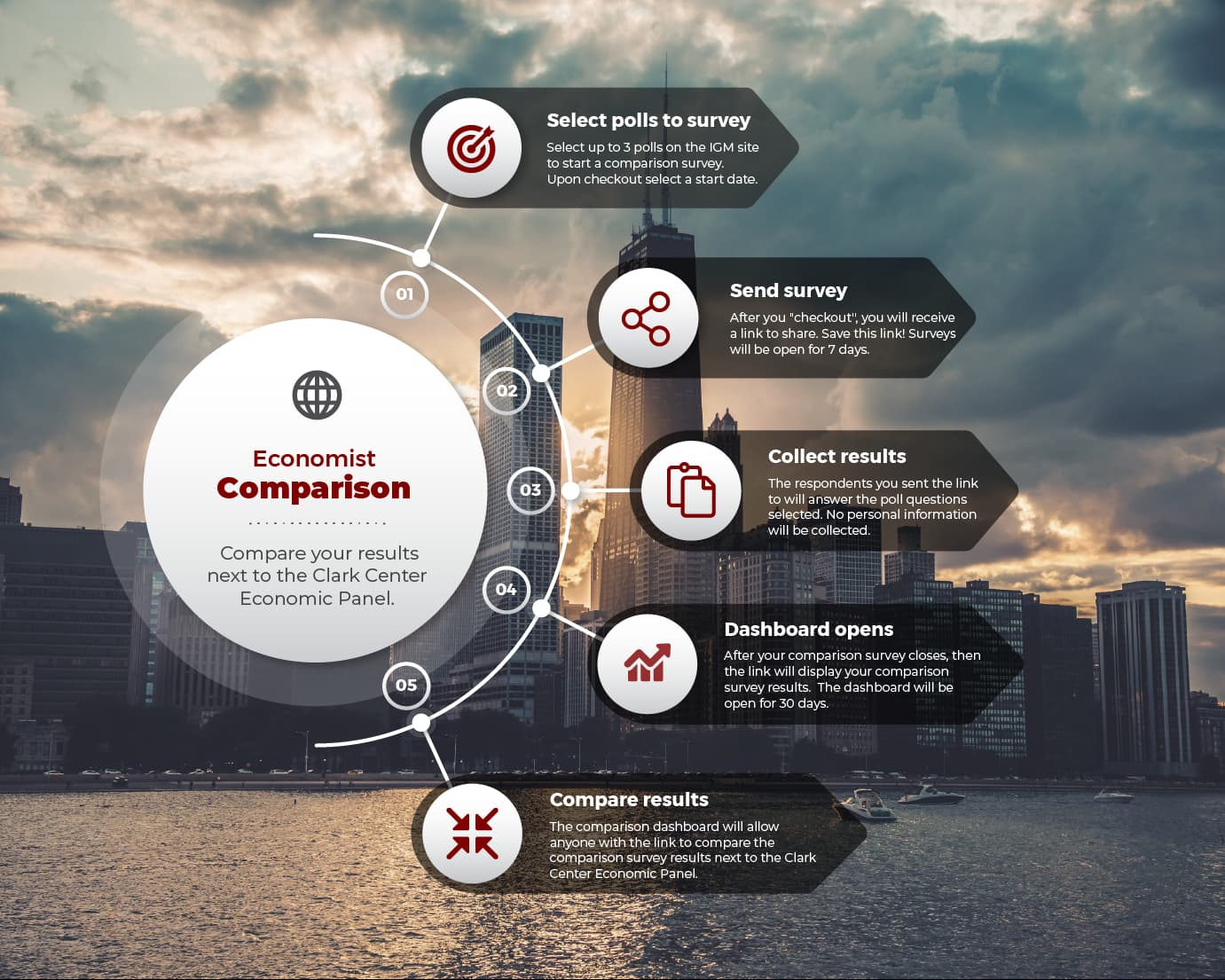Around 18 months ago, during the short-lived Prime Ministerial term of Liz Truss, your columnist had lunch with an American asset manager who happened to be in London. His visit was at least well timed for a period of extreme turbulence in the market for British government debt. Wearily he told me that he only devotes much thought to the United Kingdom at times of perceived economic crisis and that such moments seemed to come about all too often.
The last Clark Center Finance Experts poll specifically on the UK, dates to roughly that time and asked about currency depreciation at a time of concerns about government finances and debt sustainability. Before that, there were multiple polls on Brexit. The last of which, in January 2021, asked the European Panel if the British economy was likely to be at least several percentage points by 2030 that it would have been if it had remained in the European Union. Weighted by confidence, 90% of the experts agreed that it would.
Over the past 18 or so months though the United Kingdom can at least take some solace from the fact that its economy and economic policy choices have not provoked a Clark Center poll or, presumably, caused American asset managers to devote too much time to fretting about the immediate outlook.
That is not to say though that things have been going exactly swimmingly. The latest GDP data, for the fourth quarter of 2023, showed a fall of 0.3% in quarter-on-quarter output, following a drop of 0.1% in the third quarter. Two consecutive falls in GDP meets the usual definition of recession in Britain. The falls in headline GDP are at least relatively mild and may even be revised away in the future but more concerningly, GDP per capita – a much better measure of living standards – has fallen for seven consecutive quarters, the longest contraction since the modern records began in the 1950s.
This week the Chancellor of the Exchequer, who would no doubt be referred to as a finance minister in a country less attached to grand titles, unveiled his Budget. Given that the last ‘fiscal event’ was only 16 weeks before this, not a great deal had changed in the updated forecasts from the Office for Budget Responsibility (OBR), the Treasury’s fiscal watchdog which compiles the economic assessments. In the short run, better than expected news on inflation now looks set to continue giving the Bank of England the space to reduce interest rates at a faster pace over the coming year. The OBR has now revised down its forecast for the annual pace of consumer price inflation to 2.2% by the end of the year, from 3.6% in their previous estimate. The Bank’s base rate is now expected to fall to 3.5% by next Spring, a full percentage point lower than previously anticipated.
The net result was a short-term improvement in the state of the public finances which, this being an election year, the Chancellor chose to use immediately to cut national insurance contributions, a payroll tax, by two percentage points.
Much was, understandably, made by the government of some better economic news but when one steps back it is difficult to be too excited by the numbers. The OBR expect GDP to grow by just 0.8% in 2024 and 1.9% in 2025 and those estimates, low as they seem, are optimistic compared to the numbers from the Bank of England or independent economists. The January update to the International Monetary Fund’s forecasts pointed to Britain underperforming other advanced economies in the coming two years.
Over the last fifteen or so years, the UK has been hit hard by five economic shocks: the financial crisis of 2007-09, the Brexit vote of 2016, the pandemic of 2020-21, the energy price shock of 2022-23 and the financial panic of 2022 that followed the Truss budget. Some of those were external shocks and others self-inflicted. The results though have been little short of disastrous.
Real wages are not expected to regain their 2008 level until 2026, an unprecedented 18-year stagnation in pay. The ratio of government debt to GDP has risen from around 40% in 2008 to close to 90% today. Despite this week’s cuts in payroll taxes the overall tax take, as a share of national income, is expected to rise by 1.1 percentage points over the coming five years to hit 37.1% – its highest level since the Second World War. Taxes up, wages flat, and growth weak is far from an ideal economic outcome.
Global attention tends to focus on Britain only at moments of drama – and given the country has managed to have five Prime Ministers and seven Chancellors since 2016 – such moments have been uncomfortably close together in recent years. But the real economic pain has not been felt in the acute moments of danger but rather in the longer, slow burning years of weak economic growth and stagnant wages. As Martin Wolf noted this week in the Financial Times, as of the end of 2023 “real gross domestic product per head was 28 percent below what it would have been if the 1955-2008 trend had continued”. That is the single best measure of the real underlying crisis.

